Invasive tree species are non-native trees that are introduced into local areas or environments and quickly outcompete the native species. Typically, these invasive species get brought over accidentally by animals and humans. Invasive trees take over the land and reduce the population of native trees. Once introduced, they are nearly impossible to remove completely.
Kinds of Invasive Species
There are a number of invasive species that are currently threatening Canada’s forests, ecosystems and habitats. London has many invasive species, but there are four common tree species that should be identified and studied to be better prepared and educated when planting or removing trees.
Norway Maple (Acer platanoides)
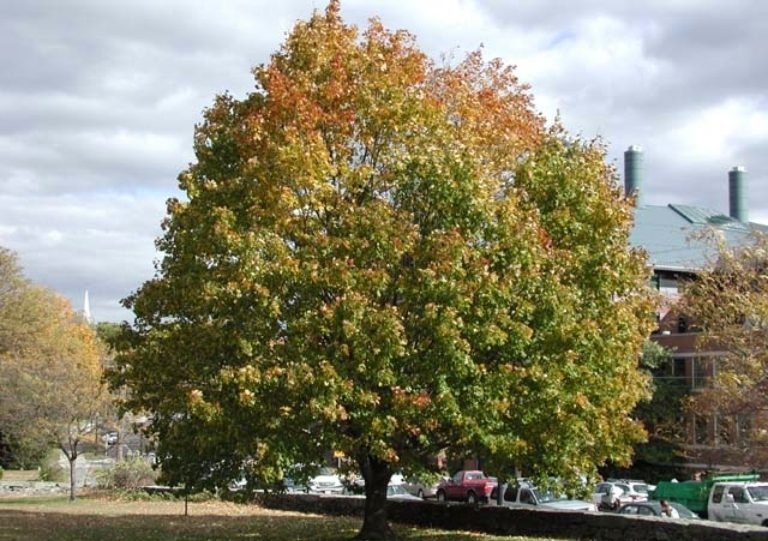
Norway maples are notorious for their dense shade and shallow roots, which makes them very difficult to garden under and plant around. Fortunately, they are also especially susceptible to maple decline.
This invasive tree has similar leaves to our native sugar maple, which often causes confusion and issues with identification. The important differences between the two lie in their maple keys (helicopters), their bark and in the colour of the juice that comes out of their leaf stalks when plucked.
Key Characteristics:
- Sugar Maple-shaped leaves
- Seed keys paired and set at a wide angle (almost 180 degrees) to one another (looking “open”) vs. sugar maple keys, which point down (looking “closed”)
- White, milky sap exuded from the bottom of leave stems when leaves are plucked (the juice from a Sugar Maple’s leaf stalk will run clear, like water).
- Bark of parent tree is set into tight “diamond” patterns along the trunk (vs. long, slightly peeling strips on sugar maples)
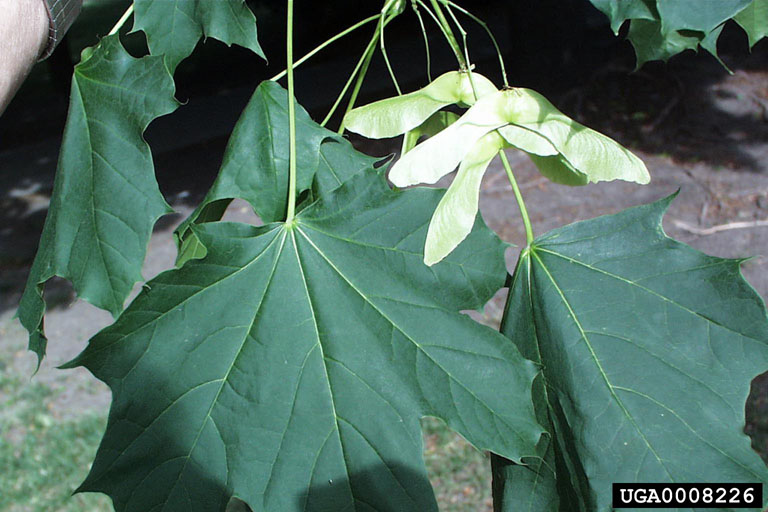
Image Source: Paul Wray, Iowa State University, Bugwood.org 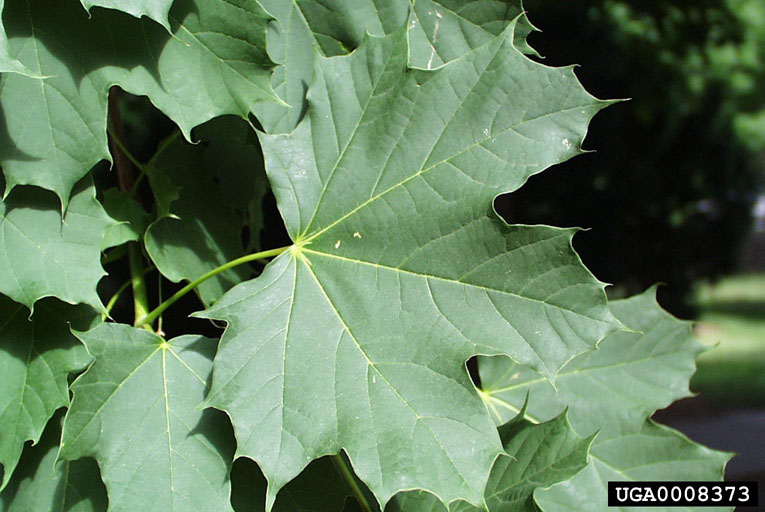
Image Source: Paul Wray, Iowa State University, Bugwood.org 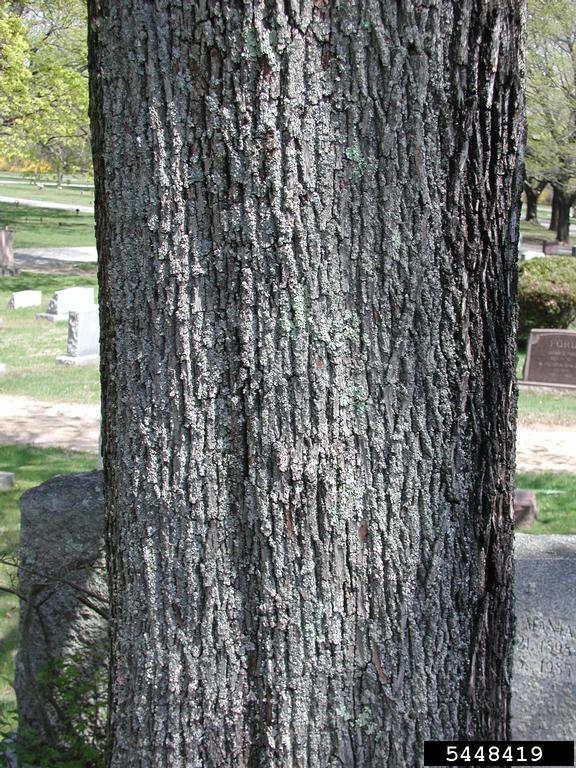
Image Source: Leslie J. Mehrhoff, University of Connecticut, Bugwood.org
European Buckthorn (Rhamnus cathartica)
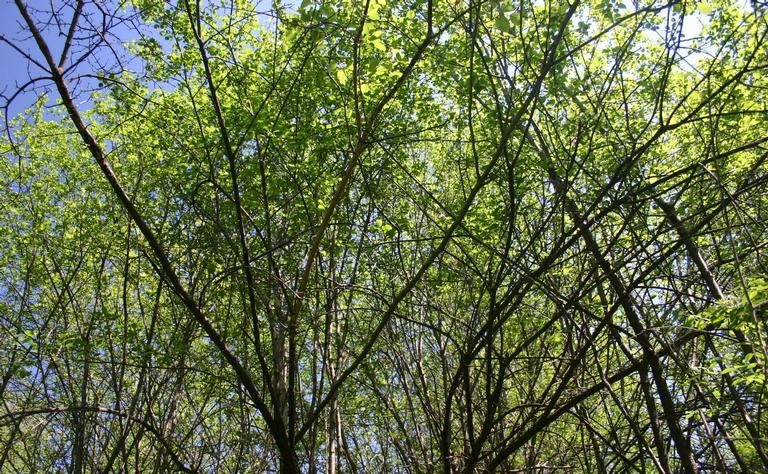
The European Buckthorn grows along the edges of almost all of London’s natural areas and woodlands. Unfortunately, it now holds the title – along with the Norway Maple – as London’s most common tree.
Key Characteristics:
- Small thorn extending out from the end of some twigs
- Many clumps of black berries in late summer through winter
- small, round leaves with teeth around the margins and veins that start at the leaf stem and curve towards the tip
- green leaves last on the branches long after everything else has fallen in the fall
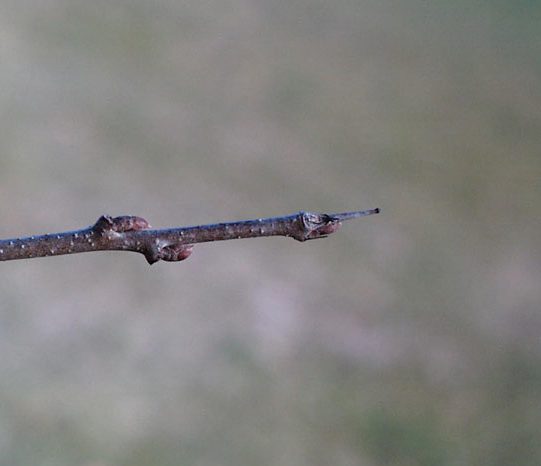
Image Source: Paul Wray, Iowa State University, Bugwood.org 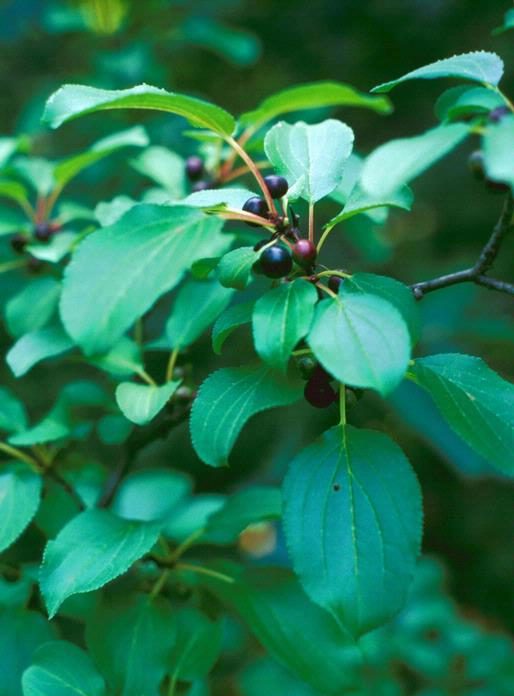
Image Source: John M. Randall, The Nature Conservancy, Bugwood.org 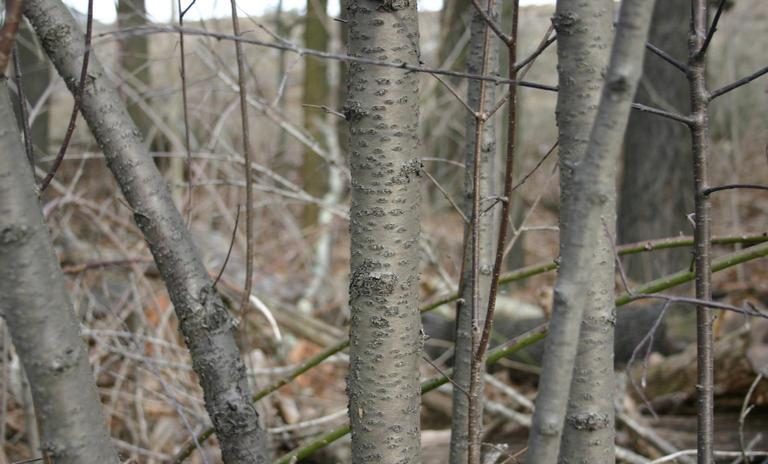
Image Source: Leslie J. Mehrhoff, University of Connecticut, Bugwood.org
Glossy Buckthorn (Frangula alnus)
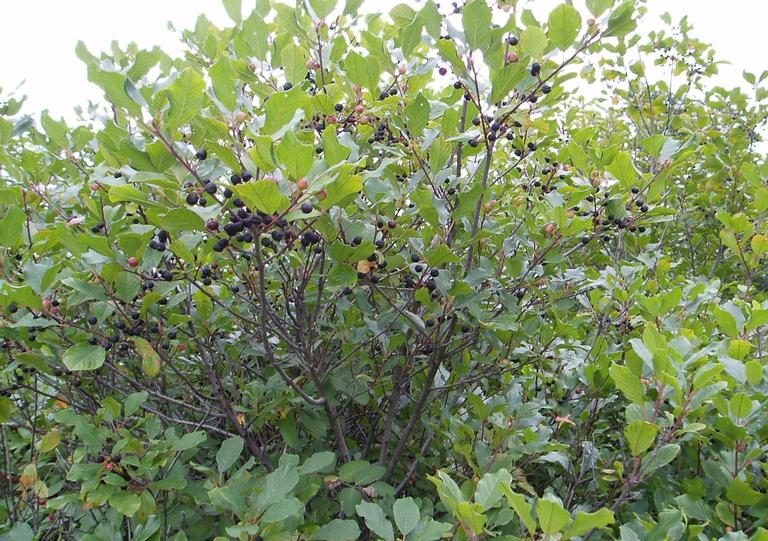
This invasive species grows in dense patches, which makes it difficult for trees to establish themselves. This species also makes it difficult for young saplings to thrive due to its heavy shade cover.
Key Characteristics:
- Tear drop shaped leaves with smooth margins
- Smooth green or red berries which turn black late in the year
- Lenticels (little dots) on the bark of young twigs and branches
- Brown fuzzy buds in winter that lack bud scales
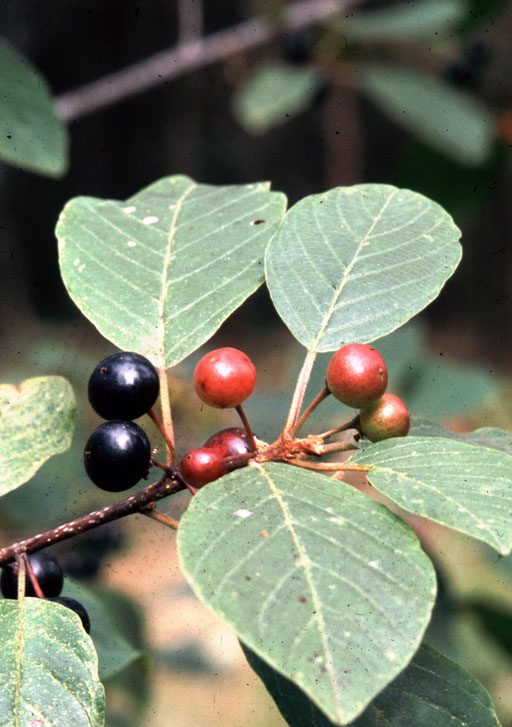
Image Source: Gil Wojciech, Polish Forest Research Institute, Bugwood.org 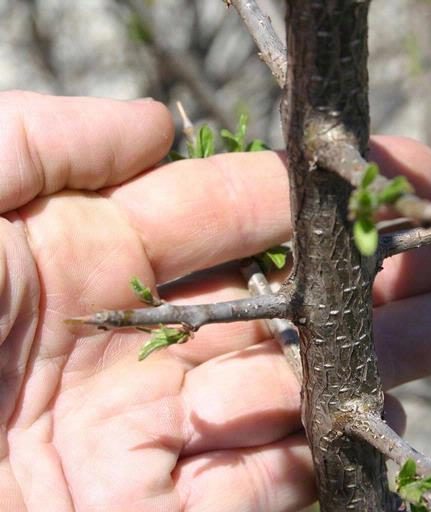
Image Source: William Fountain, University of Kentucky, Bugwood.org 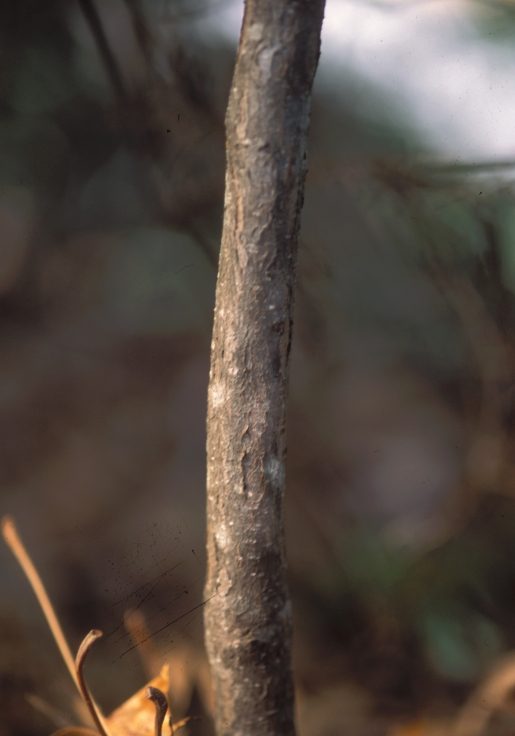
Image Source: James H. Miller, USDA Forest Service, Bugwood.org
Tree of Heaven (Ailanthus altissima)
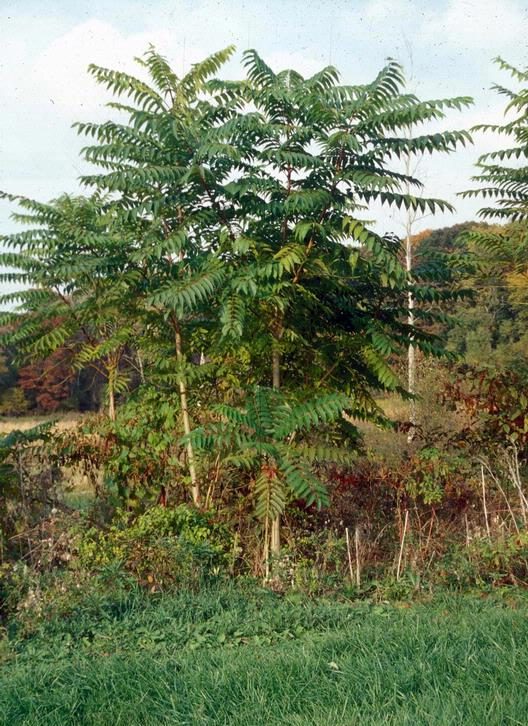
This tree gets its name from its long, stout branches and appear to be reaching up into the sky. Extremely tolerant of urban conditions (and in particular pavement), it will grow in just about any nook or cranny where it can set seed. It is also known as “stinking sumac” because of the unpleasant smell that can come from its leaves and twigs when bruised.
Key Characteristics:
- Large, compound leaves. Leaflets have distinct and unusual projections right at their base
- Stout whitish twigs with extremely large, triangular leaf scars
- Small white diamond patterns in the bark
- Unusual seeds, which are papery and have the seed in the middle
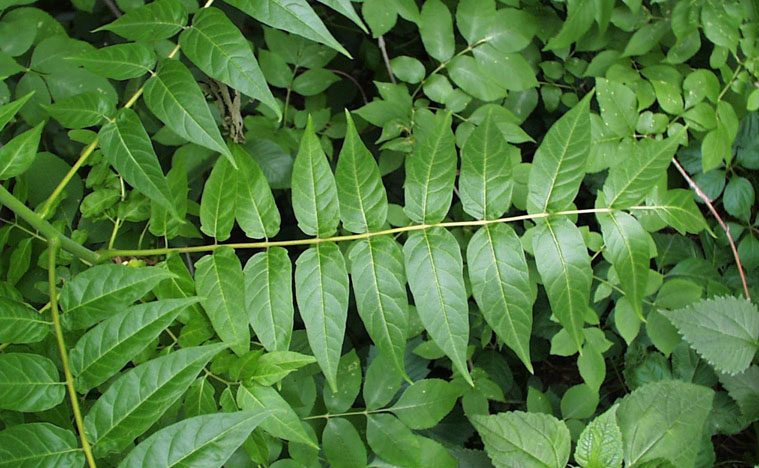
Image Source: Paul Wray, Iowa State University, Bugwood.org 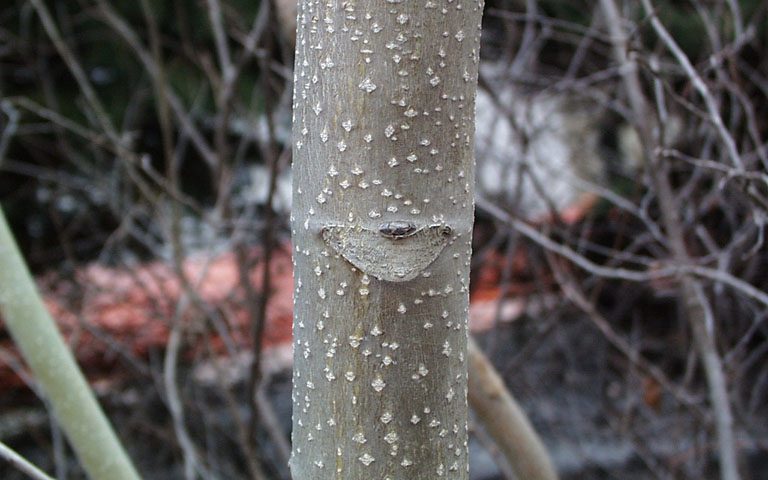
Image Source: Paul Wray, Iowa State University, Bugwood.org 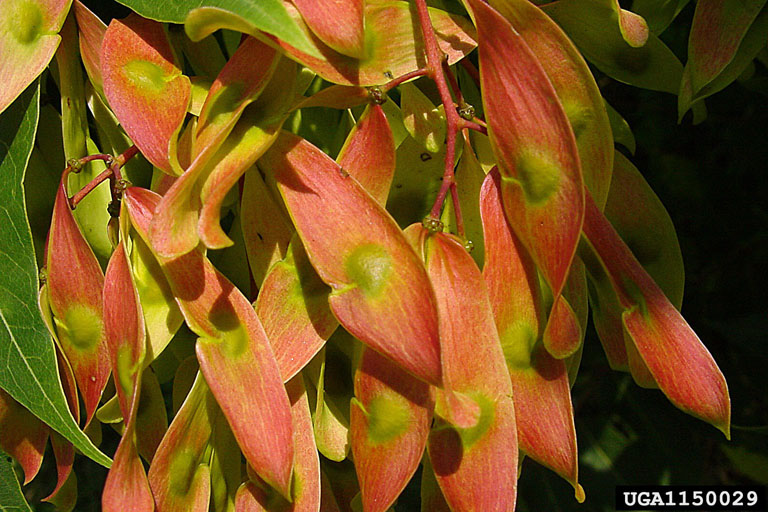
Image Source: Chuck Bargeron, University of Georgia, Bugwood.org
Sycamore Maple (Acer pseudoplatanus)
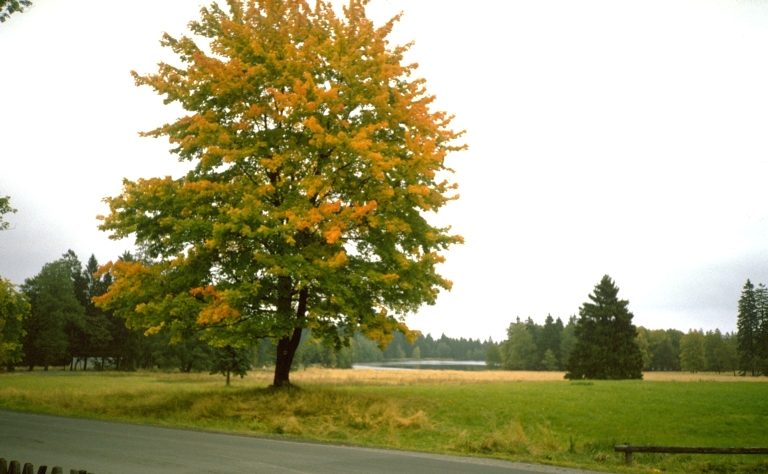
Originally from Europe and western Asia, the name ‘sycamore maple’ was adopted because of the similarity between its leaves and the sycamore trees in America. Interestingly, the sycamore maple is not part of the same genus (platanus) as the sycamores in America, hence the ‘pseudo’ in its name.
Sycamore maples thrive in areas with disturbed soil and have a high tolerance of pollution and road salt, which made them a popular choice for planting in cities; however, this was problematic, as it quickly out competed native trees. sycamore maples can produce “dense strands of trees with the potential for crowding out native plant species.”
Key Characteristics:
- Leaves have a leathery texture with five lobes and blunt edges. They range from 9-15 cm in length and have thick veins on the undersides. The undersides are lighter in colour.
- The bark is grey, and mature trees develop scales that flake away, revealing a reddish brown or orange inner bark.
- Have greenish flowers in clusters up to 13 cm long emerge in the spring. The developing maple key wings are visible among the flowers.
- Terminal bud is 6-8 mm long and its twigs are hairless with green or brown pores.
- Pairs of winged seeds grow in clusters, and each wing is 20-40 mm long. The spread between the wings is about a 60-degree angle.
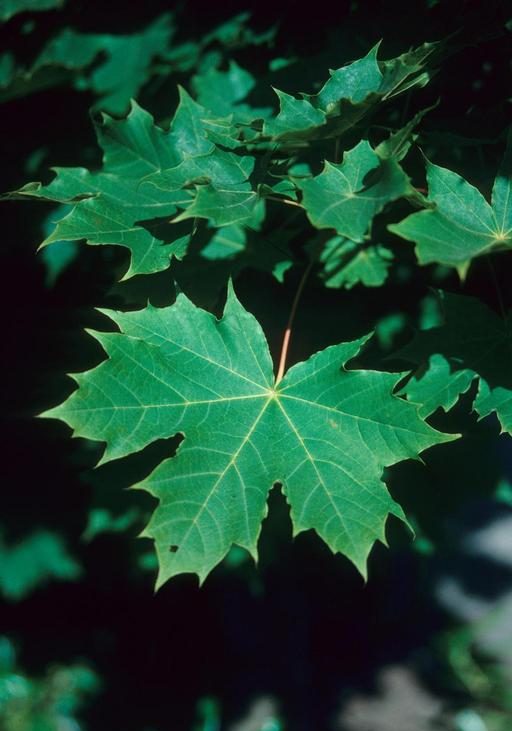
Image Source: John Ruter, University of Georgia, Bugwood.org 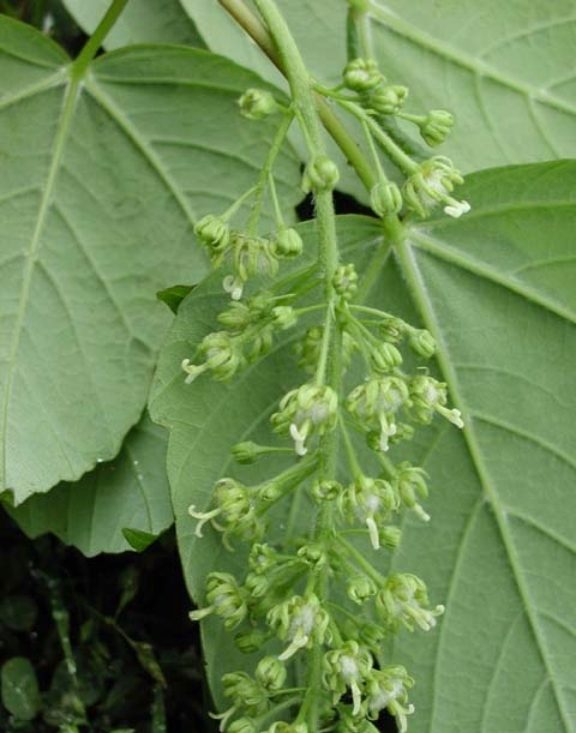
Image Source: Leslie J. Mehrhoff, University of Connecticut, Bugwood.org 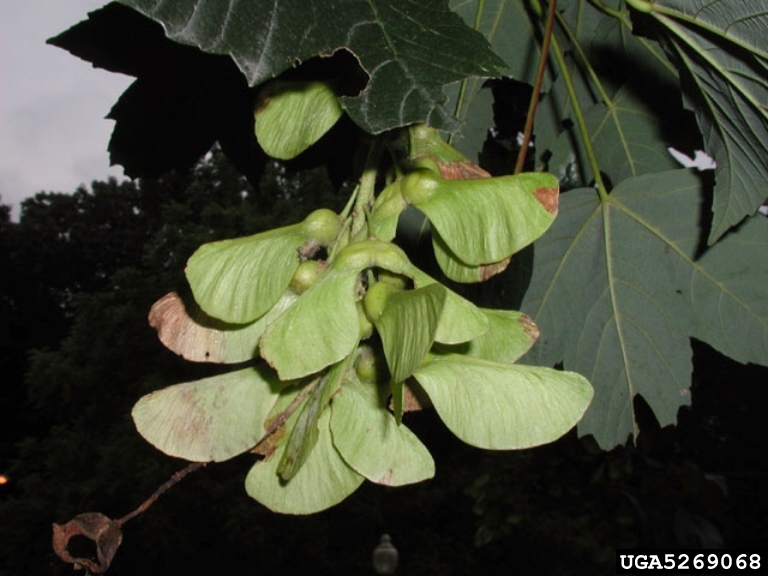
Image Source: Leslie J. Mehrhoff, University of Connecticut, Bugwood.org
Tree Removal Tool
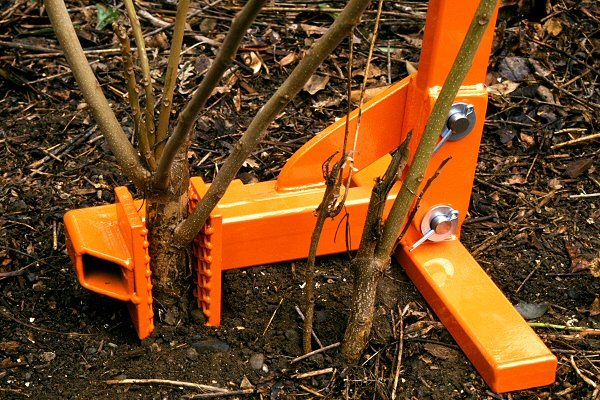
Invasive species are often hard to kill, which poses many challenges to mitigating damage to the environment and slowing the spread of the species. Cutting them is usually ineffective, as they simply re-sprout at the remaining trunk. One solution is to pull the entire tree or shrub out of the ground.
ReForest London has five Weed Wrenches. A Weed Wrench is an easy-to-use tool that grabs the base of the tree or shrub and allows you to pull it out of the ground, roots and all. The weed wrench gives you the leverage needed to remove trees 1 inch in diameter without having to cut them.
Help London manage invasive species! Please contact us to arrange a date and time to borrow (for free) one of our weed wrenches to clean up your own property.

